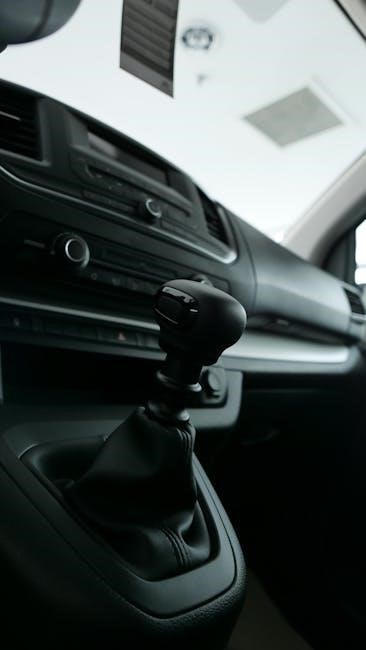The Corvette manual transmission has historically been a cornerstone of its driving experience, offering precision and control․ From 1953 through 2019, manual transmissions were a staple, but the C8 generation shifted to an automatic dual-clutch transmission, sparking debate among enthusiasts․ With only 25% of C7 Corvettes sold with manual transmissions, their rarity and performance benefits continue to captivate drivers, making them highly sought after in both classic and modern models․
Overview of Corvette Manual Transmissions
Corvette manual transmissions have long been synonymous with driving purism and performance․ Historically, manual transmissions were a staple in Corvette models, offering drivers precise control and a tactile connection to the vehicle․ The C6 generation saw 38% of Corvettes equipped with manual transmissions, while the C7 generation dropped to 26․55%․ However, with the introduction of the C8 Corvette in 2020, Chevrolet shifted exclusively to an automatic dual-clutch transmission (DCT), marking a significant departure from tradition․ Despite this, manual transmissions remain highly sought after by enthusiasts, particularly in older models, as they embody the spirit of classic sports car driving․
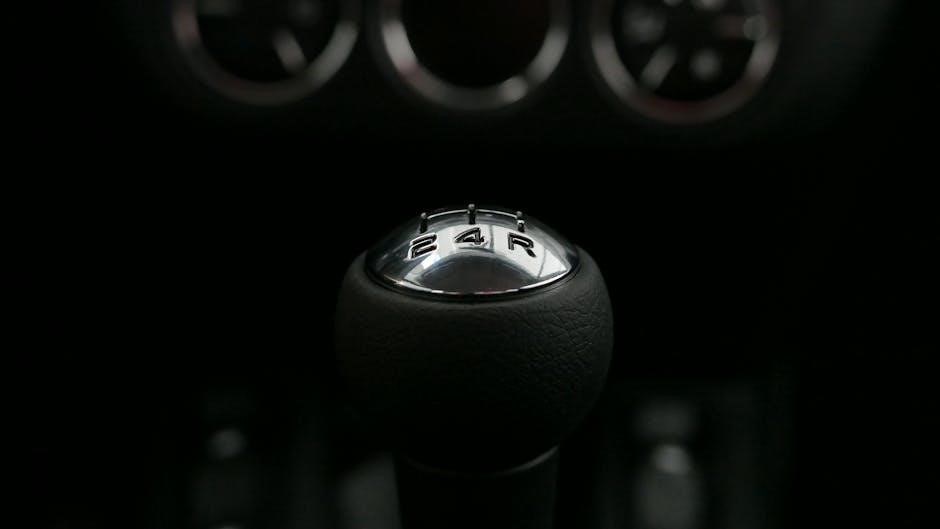
Importance of Manual Transmissions in Corvette History
Manual transmissions have played a pivotal role in shaping the Corvette’s identity as a quintessential American sports car․ From its inception, the Corvette was designed to deliver a pure, engaging driving experience, and manual transmissions were central to this ethos․ They offered drivers direct control and a connection to the vehicle, embodying the spirit of performance and precision․ Historically, manual transmissions were not just an option but a defining feature, allowing Corvette to stand out in both street driving and competitive racing․ This heritage has cemented manual transmissions as a cherished aspect of Corvette culture, appealing to purists who value the tactile driving experience․
Historical Overview of Corvette Manual Transmissions
Corvette manual transmissions debuted in the 1950s, offering precise control and performance․ They became iconic, symbolizing the car’s racing heritage and driver engagement, shaping its legacy․
Early Years: Manual Transmissions in C1-C7 Corvettes
The Corvette’s manual transmission heritage began with the C1 in 1953, featuring a 3-speed manual․ By the C2, a 4-speed became standard, enhancing performance․ The C3 introduced the TH-400 automatic but retained manual popularity․ The C4 brought the Doug Nash 4+3 manual, while the C5 and C6 saw refined units like the T-56 and TR-6060, designed for high-torque engines․ The C7 continued this legacy with the TR-6070, blending performance and comfort․ These transmissions were integral to the Corvette’s identity, offering drivers precise control and a connection to the car’s heritage, making them indispensable to enthusiasts․
Evolution of Manual Transmissions in Corvette Generations
The evolution of Corvette manual transmissions reflects advancements in technology and performance․ The C4 introduced the Doug Nash 4+3 manual, offering better gear control․ The C5’s T-56 6-speed manual became iconic for its durability and smooth shifting․ The C6 further refined this with the TR-6060, featuring improved torque capacity․ The C7’s TR-6070 introduced dual-clutch-like precision with its 7-speed design․ Each generation brought increased gear ratios, smoother engagement, and better synchronization, catering to both casual drivers and track enthusiasts․ These advancements solidified the manual transmission’s role in the Corvette’s legacy, blending tradition with cutting-edge engineering․
Discontinuation of Manual Transmission in C8 Corvette
The C8 Corvette marked a significant shift by discontinuing the manual transmission option, a first in the model’s history․ This decision was driven by the adoption of the dual-clutch automatic transmission, which offered faster shifting and better performance for the mid-engine layout․ Chevrolet cited declining manual transmission sales and the need to align with modern automotive trends as key factors․ While the move upset enthusiasts who cherished the manual driving experience, it underscored the Corvette’s evolution into a more technologically advanced sports car․ The absence of a manual option in the C8 reflects broader industry shifts toward automatic and dual-clutch transmissions․
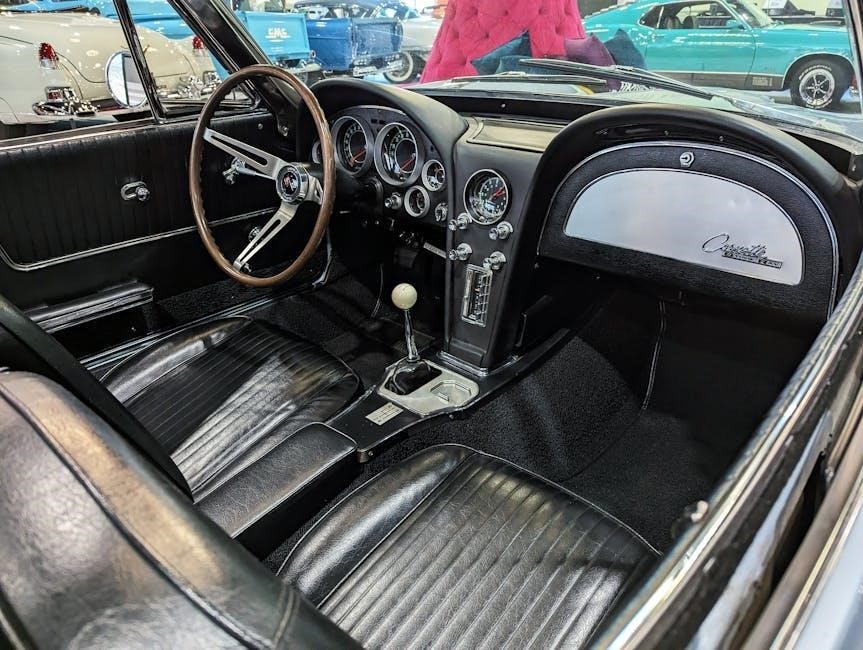
Why Manual Transmissions Are Sought After
Manual transmissions offer unmatched driving engagement, precision control, and a direct connection to the road, making them highly desirable for enthusiasts seeking an authentic Corvette experience․
Driving Experience and Control with Manual Transmissions
Manual transmissions in Corvettes deliver an unparalleled driving experience, offering direct control and a deep connection to the vehicle․ The tactile feedback of shifting gears enhances engagement, allowing drivers to feel more in sync with the car’s performance․ This hands-on approach fosters a sense of mastery and precision, particularly during spirited driving․ The ability to manually select gears provides better control over acceleration and deceleration, making it ideal for both track and winding roads․ For many enthusiasts, the satisfaction of heel-toe shifting and the mechanical interaction with the engine are irreplaceable, creating a more immersive and rewarding experience behind the wheel․
Rarity and Demand for Manual Corvette Models
Manual Corvette models have become increasingly rare, particularly in newer generations, as automatic transmissions dominate production․ This scarcity has fueled demand among enthusiasts and collectors seeking unique, driver-focused vehicles․ The exclusivity of manual transmissions, especially in high-performance trims, enhances their appeal․ Many buyers are willing to pay a premium for the tactile experience and heritage associated with manual Corvettes․ Additionally, limited production runs of manual models in certain years have made them highly sought after in the used market․ This combination of rarity and nostalgia drives their desirability, making manual Corvettes a prized possession for purists and automotive enthusiasts alike․
Performance Benefits of Manual Transmissions
Manual transmissions in Corvettes offer several performance advantages, including improved fuel efficiency and precise control over gear shifts․ They enable drivers to optimize acceleration and deceleration, particularly in racing or spirited driving scenarios․ The direct connection between the driver and the vehicle enhances responsiveness, allowing for quicker shifts and better handling․ Additionally, manual transmissions are typically lighter than their automatic counterparts, reducing weight and improving power-to-weight ratios․ This contributes to faster acceleration and sharper handling, making manual Corvettes a favorite among performance enthusiasts․ The ability to manually manage gears also reduces reliance on technology, delivering a purer driving experience tailored to driver input․
How to Choose Between Manual and Automatic Corvette
Choosing between a manual and automatic Corvette depends on driving habits, personal preference, and intended use․ Manuals offer control and connection, ideal for enthusiasts, while automatics provide ease and convenience, perfect for commuters․
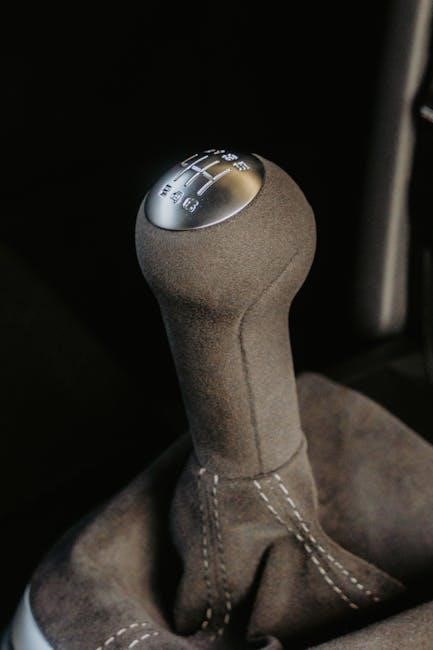
Pros and Cons of Manual Transmissions
Manual transmissions in Corvettes offer a more engaging and immersive driving experience, providing direct control over gear shifts and acceleration․ They are often lighter, more fuel-efficient, and less expensive to maintain than automatics․ Enthusiasts appreciate the connection to the car and the thrill of shifting gears, especially on winding roads or during spirited driving․ However, manual transmissions require more skill and effort, particularly in heavy traffic, and can be less convenient for daily commutes․ They also demand a learning curve for new drivers and may not be as accessible for those seeking ease of use․ Despite this, manuals remain a favorite for purists and performance-driven owners․
Pros and Cons of Automatic Transmissions
Automatic transmissions in Corvettes offer unmatched convenience and ease of use, making them ideal for daily driving and heavy traffic conditions․ They provide smooth acceleration and seamless gear transitions, reducing driver fatigue on long journeys․ Modern automatics, such as the Corvette’s dual-clutch units, deliver quick shifts and excellent performance․ However, they are generally heavier and less fuel-efficient compared to manual transmissions․ Additionally, automatics are often more expensive to maintain and repair․ While they cater to a broader audience, including those who prioritize comfort over driver engagement, they lack the direct control and connection that manual transmissions provide, making them less appealing to driving enthusiasts․
Target Audience for Manual vs․ Automatic Corvettes
The target audience for manual and automatic Corvette transmissions varies based on driving preferences and lifestyle․ Manual transmissions appeal to driving enthusiasts who value a hands-on, engaging experience and precise control over the vehicle․ These are often younger drivers, car enthusiasts, or those who prioritize performance and connection with the car․ Automatic transmissions, on the other hand, cater to a broader audience, including commuters, professionals, and those seeking convenience and ease of use․ Additionally, automatics are ideal for drivers who prioritize comfort and stress-free driving in heavy traffic․ The choice between the two aligns with individual priorities, such as driving enjoyment or practicality․
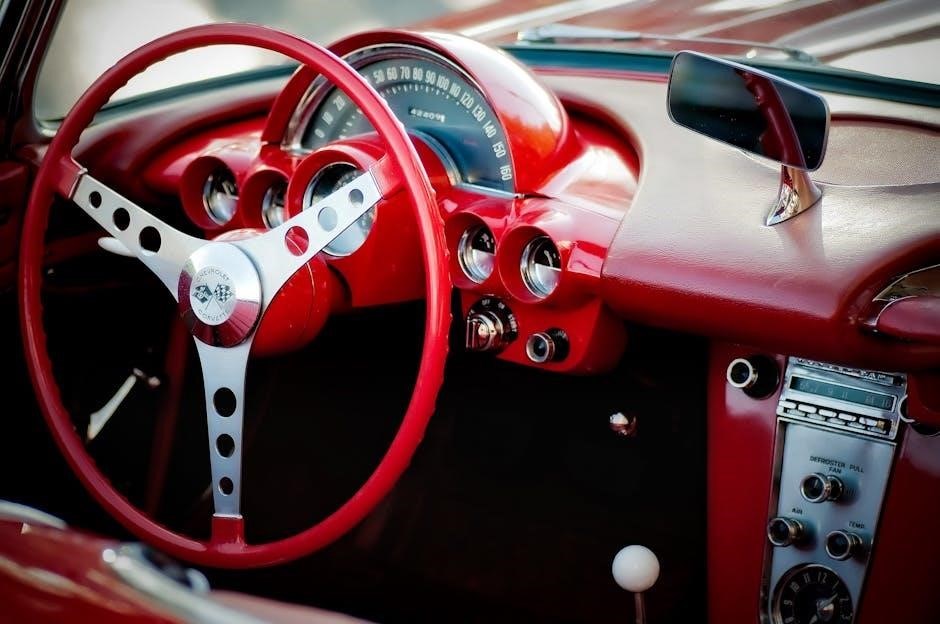
Current Availability of Corvette Manual Transmissions
Manual transmissions remain available in select Corvette models, including the C8 Stingray, offering driver engagement․ Limited production and high demand make them desirable in the market․
Used Corvette Models with Manual Transmissions
Many used Corvette models, particularly from the C1 to C7 generations, feature manual transmissions, offering enthusiasts a chance to own a piece of automotive history․ These models, such as the C5 and C6, are sought after for their drivability and classic appeal․ While newer Corvettes like the C8 have shifted focus to automatic and dual-clutch transmissions, the used market still provides ample opportunities to find manual-equipped Corvettes․ Buyers should inspect the clutch and gear synchronizers for wear, as these components are critical to the transmission’s performance․ Additionally, the discontinuation of manual options in newer models has increased demand for pre-owned manual Corvette models․
Future Prospects for Manual Transmissions in Corvette
The future of manual transmissions in the Corvette lineup remains uncertain, as modern automotive trends favor automatic and dual-clutch systems for performance and convenience․ However, Chevrolet has not entirely ruled out manual options, especially given the loyal enthusiast base․ While the C8 Corvette currently lacks a manual transmission, rumors suggest that future variants, such as high-performance or special editions, might reintroduce manual gearboxes․ Additionally, advancements in hybrid or electric powertrains could potentially incorporate manual-like driving experiences; For now, manual transmissions in Corvette models are likely to remain niche offerings, catering to purists who value the tactile connection of shifting gears․

Maintenance and Care for Corvette Manual Transmissions
Regular fluid changes, leak checks, and clutch system inspections are essential․ Proper shifting techniques and filter maintenance ensure optimal performance and longevity of the manual transmission․
Tips for Maintaining a Corvette Manual Transmission
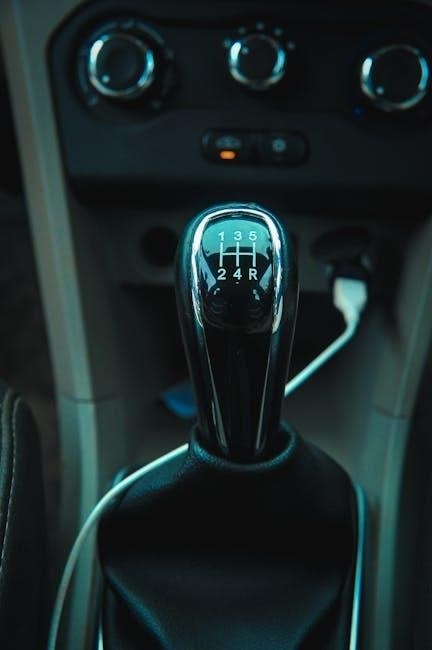
Regular maintenance is crucial for extending the life of a Corvette manual transmission․ Check transmission fluid levels regularly and replace it every 30,000 to 60,000 miles․ Inspect for leaks around the seals and gaskets, and address them promptly․ The clutch system should be monitored for wear, with adjustments made as needed․ Avoid “riding the clutch,” as this can cause premature wear on components․ Additionally, ensure proper alignment of the shifter and linkage to maintain smooth operation․ Finally, have the transmission serviced by a qualified mechanic every 50,000 miles to identify potential issues early․ Proper care ensures optimal performance and longevity․
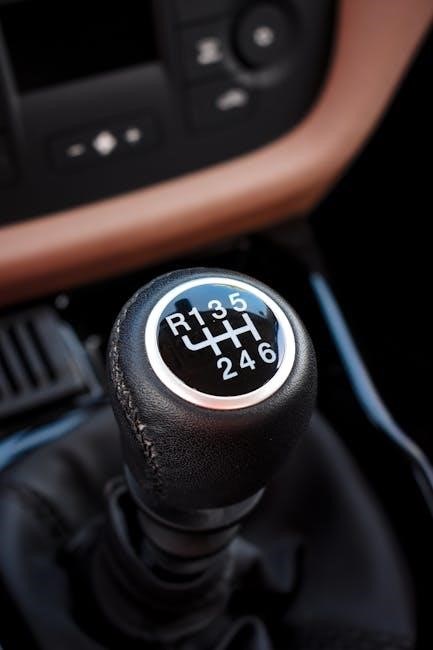
Common Issues with Corvette Manual Transmissions
Corvette manual transmissions can experience issues like worn synchronizers, leading to grinding gears․ Bearings may wear out over time, causing noise during operation․ Clutch failure is another concern, often due to excessive wear or improper engagement․ In older models, such as the C5 and C6, the transmission’s seals and gaskets may leak fluid․ The C7 generation occasionally faced issues with the PRNDL (Park, Reverse, Neutral, Drive, Low) mechanism․ High mileage can also lead to gear tooth wear, requiring costly repairs․ Regular inspections and timely replacements of worn parts are essential to prevent these problems from escalating and ensure smooth transmission performance․
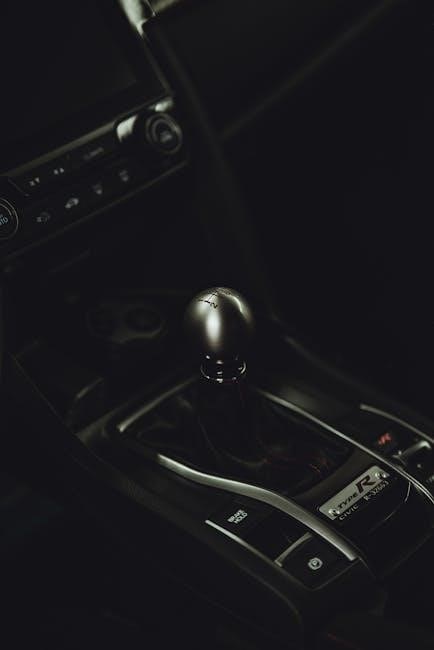
Performance and Upgrades for Corvette Manual Transmissions
Corvette manual transmissions offer precise control and enhanced driving dynamics․ Upgrades like lightweight flywheels and high-performance clutches can improve efficiency and power delivery for optimal track performance․
Upgrading Corvette Manual Transmissions for Better Performance
Upgrading a Corvette’s manual transmission can significantly enhance its performance․ Replacing the stock clutch with a high-performance unit improves power delivery and reduces wear․ Lightweight flywheels can increase acceleration by minimizing rotational mass․ Installing a short-throw shifter reduces shift times and provides a more precise feel․ Upgrading to a performance-oriented gear set with optimized ratios can improve acceleration and top-end speed․ Additionally, aftermarket transmission coolers can prevent overheating during intense driving sessions․ These upgrades not only make the Corvette more responsive but also tailor the driving experience to suit track or enthusiast needs․ Proper installation and tuning are crucial to maintain reliability and maximize performance gains․
Impact of Manual Transmissions on Corvette Speed and Acceleration
Manual transmissions have a direct impact on Corvette speed and acceleration by providing precise control over gear shifts․ The ability to manually select the optimal gear enhances torque delivery, especially during acceleration․ Corvette models equipped with manual transmissions often achieve faster 0-60 mph times compared to their automatic counterparts․ The direct connection between the driver and the engine fosters a more engaging driving experience․ Additionally, manual transmissions typically weigh less than automatics, reducing overall vehicle mass and improving power-to-weight ratios․ This combination of control, responsiveness, and efficiency makes manual transmissions a preferred choice for drivers seeking maximum performance and driving involvement in their Corvette․
Final Thoughts on Corvette Manual Transmissions
Future of Manual Transmissions in the Corvette Lineup
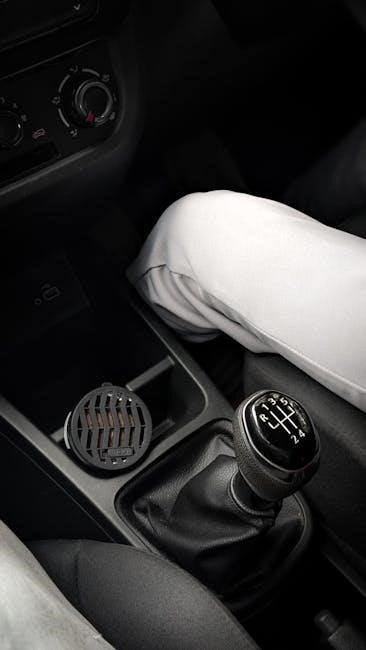
The future of manual transmissions in the Corvette lineup appears secure, though niche, as Chevrolet continues to cater to driving purists․ While automatics dominate sales, the emotional connection and tactile experience of a manual gearshift likely ensure its place in future models․ Advances in transmission technology could enhance efficiency and performance, keeping manuals relevant․ The Corvette may retain manual options alongside automatics, appealing to both enthusiasts and everyday drivers․ As the automotive world shifts towards automation, the manual Corvette stands as a testament to driving tradition, offering a unique experience that balances heritage with modern innovation․
